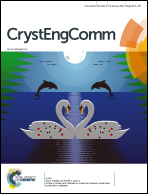Pyrene-box capsules for adaptive encapsulation and structure determination of unstable or non-crystalline guest molecules
Abstract
“Pyrene-box” cages easily crystallize from aqueous solutions and readily encapsulate compounds of biological interest. These host–guest systems can be obtained under ambient conditions from 1,3,5,8-pyrenetetrasulfonate (PTS), guanidinium derivatives (G+) and biogenic guests bearing cationic groups. Out of the many examples of synthetic molecular capsules, Pyrene box cages are completely responding to the requirements of green chemistry: non-toxic, water soluble, cheap, commercially available compounds. The “Pyrene-Box” cages have been used for the in situ encapsulation of unstable or non-crystalline biogenic compounds, allowing the complete molecular structure determination of species that do not crystallize by themselves. The encapsulated guests have a reduced motional degrees of freedom which is obtained via their anchoring to the Pyrene box cages that allows at the same time to reduce a significant amount of disorder. In this highlight we discuss the recent developments of the encapsulation chemistry of the “Pyrene box” and the strategy behind its synthesis, together with further possible developments and the limitations of this biomimetic supramolecular cage system. The “Pyrene Box” shows great potential for future applications, ranging from fundamental studies of structure determination of unstable molecules to drug delivery vehicles.

- This article is part of the themed collection: 2018 Highlight article collection


 Please wait while we load your content...
Please wait while we load your content...